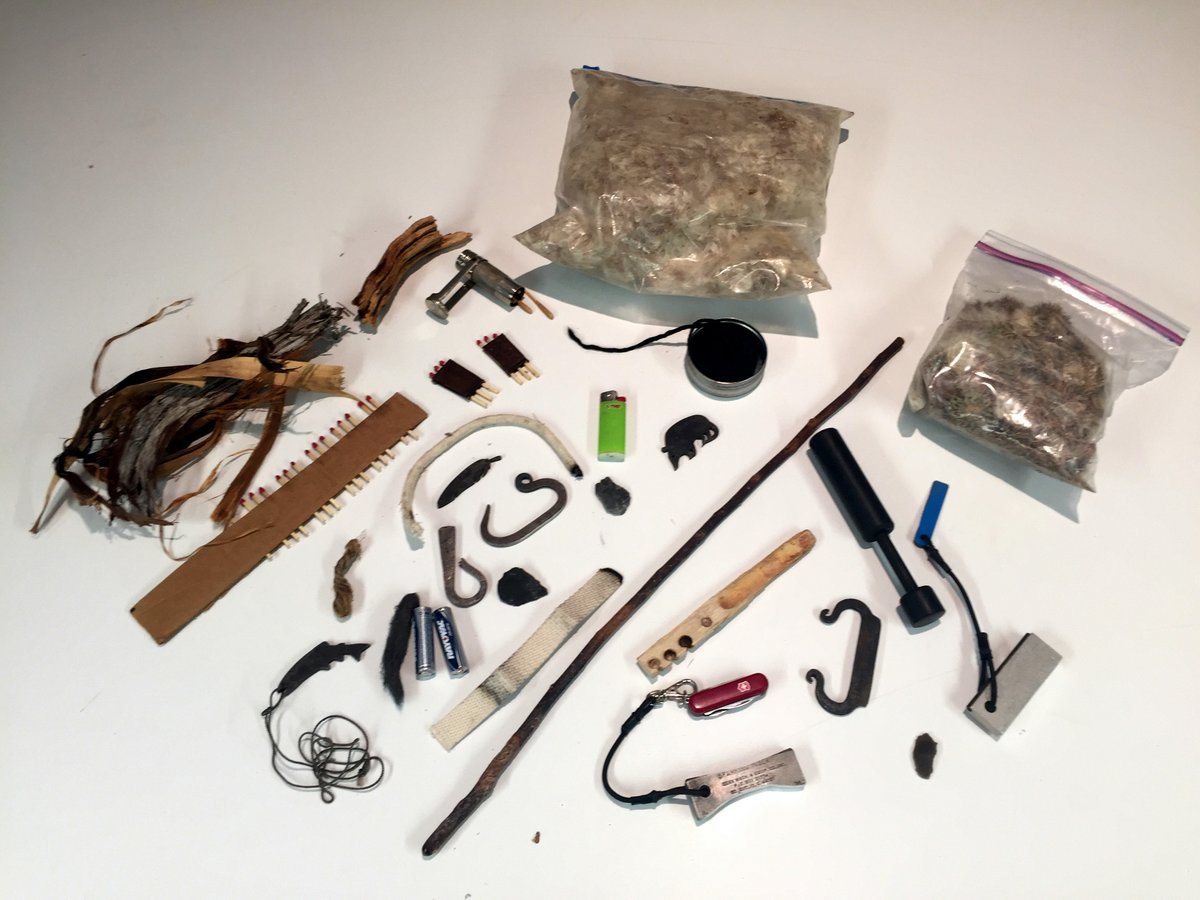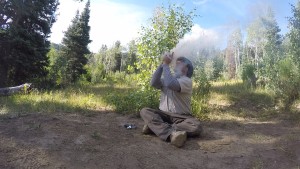There is always Fire Starting Gear of some kind to be had, whether it is made of naturally occurring elements or it is purchased, made by someone else. In ancient historic writings we read of “smiting two stones together” to make fire, we know of the Romans and on up into our times using flint and steel. There are the natives of the South Pacific using compression in a fire piston. Using bamboo in a fire saw is popular in many places. All over the world are found various drill methods of creating a fire. All of these and more have been used through the centuries by man to kindle fire.
In the more modern era came matches, fluid lighters, butane lighters, mish metal and Ferro rods, magnesium bars and rods, various sparkers and prepared tinder’s, magnifiers, and numerous combinations of the above. The gear for fire starting is seemingly endless when you consider the items for initializing the fire process, an exothermic reaction really, combined with the tinder and kindling items.
With the myriad gear items available to assist in creating fire what is the very best to have?
I don’t think there is actually a best answer here as there are many other questions to consider relating to a person’s skill, preferences, locale, available resources, and a person’s physical condition. Offhand I would say for reliability, easiness of use, and cost, it is hard to beat a quality butane lighter. Many would curse at that being the choice however since a butane lighter has no manly gritty romanticism inherent with it. As with many things in bushcraft, survival, and preparedness there seems to be no end to the reasoning of one fire starting method over another, it seems a case can be made in some way for any one of them. The question really comes down to, what do you want to do? What you want to do then has to be qualified by what can you do? Or rather what can you do reliably?
I like to look at the whole survival picture by dividing things into three parts: Knowledge, Skills, and Gear.
Knowledge-this is the brain learning or book work part of the equation. Discovering the how, why, where, when of each subject, in this case fire starting. This takes us to how fire works. What are the natural rules or laws governing fire? Then knowing these taking of our resources and manipulating them to create fire. This is how so many methods have been developed. Now knowledge is only a portion of the equation and it alone will not give success in starting fire.
Skills-fire cannot be created without a certain amount of skill, there is needed a degree of dexterity, the ability manipulate various items properly. Included with skills is stamina, as some methods require more lengthy periods of time to produce results. With some of the ways listed to produce fire certain tools need to be fashioned, which involves combining knowledge of materials needed with the ability to manufacture the tool. Finesse is developed with practice that eases and hones the technique into a smooth simple looking process. When a given method is refined to a point that it happens with ease, it can then be said, a new skill has been acquired.
Gear-this is what the beginner starts with, then wonders why he is not successful. Without knowledge and skills, it is only pure luck that a person produces and maintains fire. Having gained knowledge about fire and the choices available in how to create it a person can then choose the method they would like to pursue, they then obtain the gear needed, and work on developing the skill necessary to reliably succeed.
Perhaps it would be helpful to group fire starting methods into categories
Easiest for anyone
- Butane Lighter
- Fluid lighter
- Matches
- Sparklite striker w tinder
Moderate
- Doan Magnesium
- Ferro Rod
- Mish metal Rod
- Flint and steel
- Magnifying lens/Fresnel Lens
- Steel Wool
More difficult
- Bow drill
- Hand drill
- Fire plow
- Fire saw
- Fire Piston
We could also sort the methods into levels of reliability, assuming a person has the skill for each method
Most reliable
- Doan Magnesium
- Ferro rod
- Mish metal rod
Usually reliable
- Butane lighter (Bic)
- Fluid lighter
- Flint and steel
- Steel wool
Difficult at times
- Magnifiers
- Bow drill
- Hand drill
- Fire saw
- Fire plow
- Fire piston
The above lists are quite general, and depending on the person, the arrangement could vary tremendously, my effort is to list them as might be common in the population. For reliability part of the consideration is tendency to breakage, the need to manufacture with proper materials the tools needed, and the level of skill needed. One thing not covered in this post, that is every bit as significant, is the ability to start a fire that endures with the above methods. Most can get a flame from a lighter, but far fewer are effective at starting a fire in challenging conditions.
In the end the gear chosen for starting a fire should meet whatever goals you have set. If you are looking to sock something away for use should things come crashing down that is one thing, if you want to master a primitive skill or some other alternative method then that is something different. As I’ve said in many blogs before, you must define your purpose before you can really know the direction to move in. All the various methods have merit in some way. Personally I like to have a Doan Magnesium in my possession, to me it’s easy to use and will start a fire if one is possible, it’s practically indestructible, and is very inexpensive. A good lighter is also nice to have, I prefer the BIC mini’s in bright colors. We use them in our business cleaning up threads and ends as needed, never has one not work till it ran out of fuel. The important thing is to have several methods that you are skilled at, carry a couple backups. Perhaps the most important thing is NEVER be afraid to use a simple modern method to start a fire when needed. Some people are too proud, and think someone may think less of them. When times are tough and a fire is needed, use whatever you can. Finally if you can start a fire with a split paper match, or the equivalent, you have mastered it.
Choose the methods you like and become proficient at them, then add others as you can. Learning is lots of fun and provides a great confidence booster when you become successful. Until next time this is Perry Peacock, for Simplifying Survival.





Perry–
After I have a FSK, can I get individual components, such as paper, separately? If so, what are the costs?
Joe yes you can get replacements of the Concentrator Paper and the Fire Sticks each pack is $1.25. I guess we should put them on the website, no ones run out yet, haha. Thanks for asking! Perry